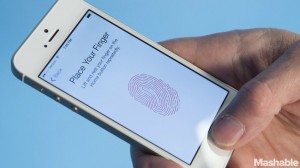Apple fixes ‘Error 53′ and apologizes to customers for bricking iPhones
— February 19, 2016Apple has acknowledged and resolved the issue known as “Error 53,” which rendered some iPhones unusable. This error would occur when the home button on iPhone 6 or 6 Plus devices was repaired outside of an Apple Store or an Apple-authorized service center. The error caused these devices to become “bricked,” meaning they could no longer function after an iOS update or restore. Apple’s recent software update aims to fix this problem and prevent it from happening in the future.
In an interesting about face, Apple on Thursday released an updated version of iOS 9.2.1 for mobile application development iTunes that will fix phones bricked by “Error 53″ and prevent future unofficial Apple repairs from bricking phones.
In a statement given to Mashable, Apple said:
Some customers’ devices are showing ‘Connect to iTunes’ after attempting an iOS update or a restore from iTunes on a Mac or PC. This reports as an Error 53 in iTunes and appears when a device fails a security test. This test was designed to check whether Touch ID works properly before the device leaves the factory.
Today, Apple released a software update that allows customers who have encountered this error message to successfully restore their device using iTunes on a Mac or PC.
We apologize for any inconvenience, this was designed to be a factory test and was not intended to affect customers. Customers who paid for an out-of-warranty replacement of their device based on this issue should contact AppleCare about a reimbursement.
Understanding the ‘Error 53’ Problem
The issue with Error 53 was linked to a security feature designed to ensure that the Touch ID sensor and the phone’s other hardware components were compatible. When a customer had their home button replaced at a non-authorized repair center, the device’s software would detect a mismatch between the hardware and the Touch ID sensor. At first, the phone appeared to function normally, with Touch ID working as expected. However, once the user tried to update iOS or restore their device from a backup, the system would check for this hardware compatibility. If no match was found, the device would become unusable, triggering the “Connect to iTunes” message.
Apple initially claimed that the error was a security measure, aimed at preventing tampering with the Touch ID sensor. However, users were frustrated by the fact that their phones were disabled entirely rather than just the Touch ID function. This led to significant backlash and even a class action lawsuit against the company.
Apple’s Response and Software Fix
In response to the outcry, Apple released a new software update for iOS 9.2.1 that fixes the “Error 53” problem. The update allows affected iPhones to be restored using iTunes on a Mac or PC. Apple explained in a statement that the error was caused by a security test, which ensured that the Touch ID sensor was working properly before the device left the factory. However, this test unintentionally affected customers who had their devices repaired by non-Apple service providers.
Apple’s software update resolves the issue for those whose devices were previously bricked. The update also ensures that unauthorized repairs will not cause future devices to be disabled by this error. While this provides relief for many customers, there are important details regarding the functionality of the device after the fix.
Impact on Touch ID Functionality
While the software update resolves the bricking issue, there is one limitation. After the update, the Touch ID sensor will no longer function if the device has been repaired at a non-Apple service provider. This is because the Touch ID sensor’s Secure Enclave, a component that stores sensitive data such as fingerprints, needs to be paired and secured with the rest of the phone’s hardware. Only Apple or an Apple-authorized repair center has the tools and permissions to properly pair the sensor with the device.
For users who have had their home button replaced outside of Apple’s official channels, this means that their phone will work again, but they will lose access to Touch ID functionality. While this is a significant drawback for those who rely on the feature, the phone will still operate normally for all other functions.
Apple’s Apology and Reimbursement Process
Apple issued a public apology to customers affected by Error 53, acknowledging the inconvenience caused by the issue. In its statement, the company emphasized that the error was never intended to affect customers and was a result of the factory security test. For customers who had to pay for an out-of-warranty device replacement due to Error 53, Apple has offered reimbursement. Affected users are encouraged to contact AppleCare to begin the reimbursement process.
How to Fix Your Device
If you have an iPhone that was bricked by Error 53, you can restore your device by updating it to iOS 9.2.1. Plug your iPhone into iTunes on a Mac or PC and run the update. The software will restore the phone and resolve the Error 53 issue. However, as mentioned earlier, the update will not restore Touch ID functionality for phones repaired outside of Apple’s official repair network.
It’s important to note that even though the device will no longer be bricked, it will not regain the ability to use Touch ID if the home button was replaced by an unauthorized repair center. Apple’s official repair services remain the only option for restoring full functionality, including the secure pairing of the Touch ID sensor.
Conclusion
Apple’s response to the “Error 53” issue shows a commitment to resolving customer complaints and fixing technical issues with its devices. The release of iOS 9.2.1 addresses the immediate problem of bricked devices, ensuring that iPhones affected by the error can be restored. However, the loss of Touch ID functionality for devices repaired outside of Apple’s network remains a significant limitation. While the company has apologized and offered reimbursement for out-of-warranty device replacements, users who require full functionality will need to rely on Apple or Apple-authorized repair services for future repairs.





